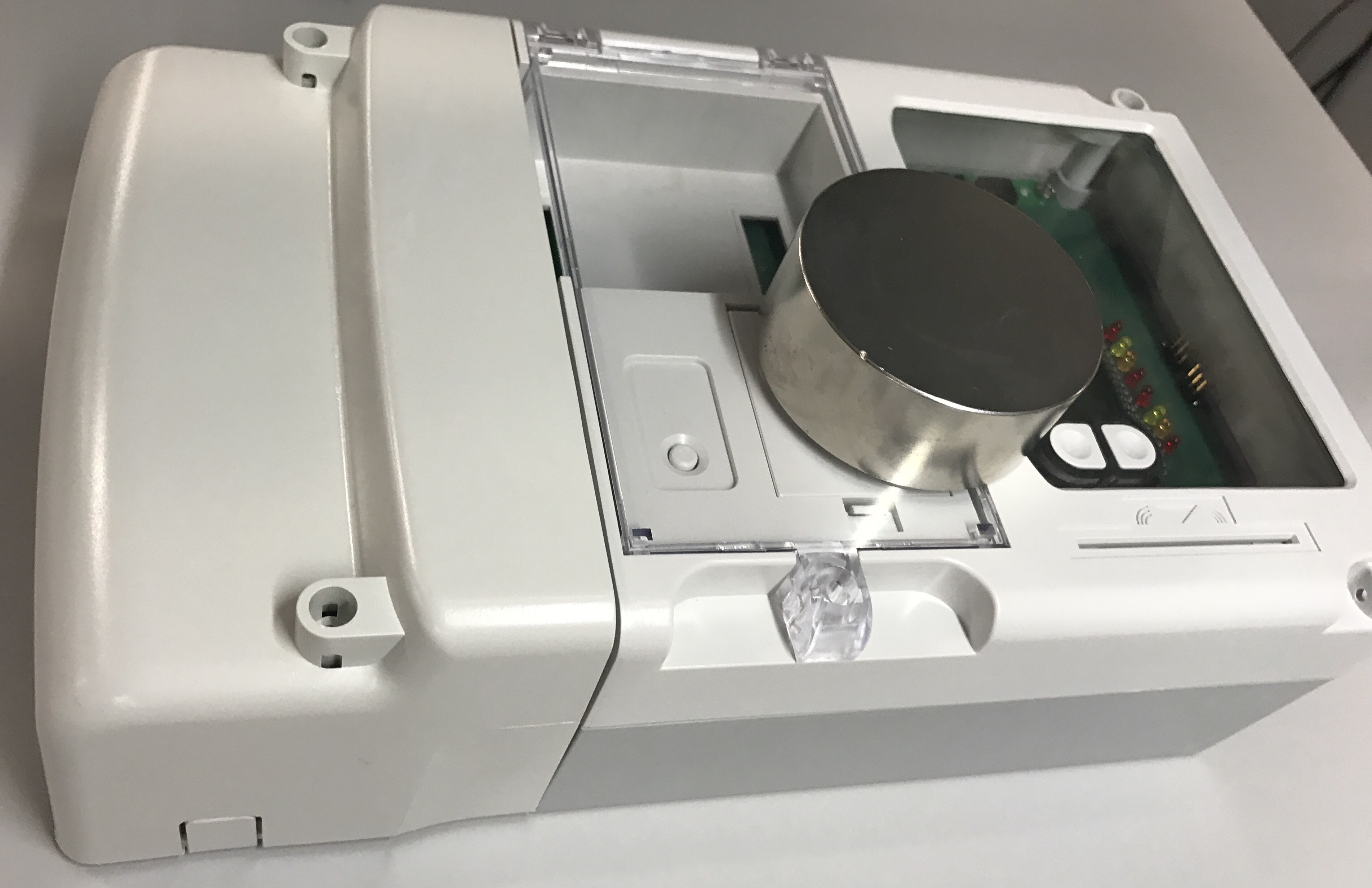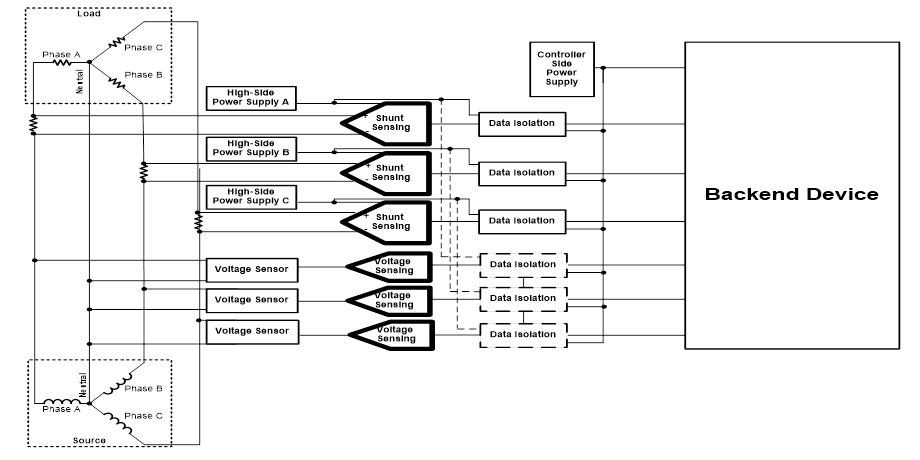SSZT615 october 2018 AMC1106M05 , AMC1210 , AMC1304M05 , ISO7731 , MSP430F67641A , MSP430I2041
To minimize revenue loss, it is imperative that utility providers harden their systems against someone trying to steal electricity. Since electricity meters are both relatively accessible and are integral to the proper billing of utility customers, tampering is becoming more and more common.
One of the most common noninvasive ways to tamper with a meter is to apply a strong magnet nearby (as shown in Figure 1) in order to paralyze any transformers in the meter such as current transformer (CT) current sensors. Since the sensed current, along with the sensed mains voltage, is used to calculate the active energy quantity for billing purposes, paralyzing the CT affects the meter’s ability to sense energy consumption and essentially enables the tamperer to steal electricity.
 Figure 1 A Tampering Magnet Applied to
a Meter Case
Figure 1 A Tampering Magnet Applied to
a Meter CaseTo harden a meter against magnetic tampering, some designers use shunt current sensors instead of CTs because of their magnetic immunity. Using a shunt for a single-phase meter is relatively simple: all you have to do is reference the system with respect to the shunt. If the shunt is on the neutral, then the system should be referenced with respect to neutral, and if the shunt is on the line, then the system should be referenced with respect to line. For polyphase meters, using shunts as sensors is less straightforward. Because shunts do not have inherent isolation, external isolation is necessary when using them in polyphase systems.
Figure 2 shows the functional components of a polyphase system with isolated shunt sensors. This architecture features one individual device per phase that measures the voltage across the shunt sensors. These devices could be something like the AMC1106M05 isolated delta-sigma modulator or a MSP430i2041 metrology analog front end (AFE).
Isolating these shunt sensing devices allows multiple shunt devices that measure the voltage across shunts on different phases to communicate with the same back-end chip. The back-end device is typically selected based on its ability to communicate with the shunt sensing device.
For example, if you used something like the AMC1106M05 as the shunt sensing device, then you would select a back-end chip like the MSP430F67641A or AMC1210, since they have digital filters that could take the bitstream from the AMC1106 to generate analog-to-digital converter (ADC) samples.
 Figure 2 Functional Components of a
Polyphase System with Isolated Shunt Sensors
Figure 2 Functional Components of a
Polyphase System with Isolated Shunt SensorsFor data isolation, you could use either an external digital isolator like the ISO7731 or a shunt sensing device with integrated isolation like the AMC1106M05. To calculate the active energy quantity (that customers are billed by), it is also necessary to measure the mains voltage in addition to the current of the utility customer’s load. A voltage sensor (typically consisting of resistors in series) senses the voltage and translates the mains voltage to a range for sensing by an ADC.
In a polyphase system with isolated shunt sensors, it’s possible to implement the mains voltage sensing on the same device that senses the voltage across the shunt. The sensing could also occur on the back-end chip if the back-end device’s voltage sensing is synchronized with the shunt sensing.
A power supply is needed to power the host microcontroller’s (MCU) side of the isolation barrier, which is called the controller side. In addition, to properly power the shunt sensing device and its side of the isolation barrier, you’ll need a power supply for each shunt sensing device. Capacitor-drop power supplies are good options for cost-sensitive systems that are exposed to strong magnets, and for systems that require low current consumption from the controller-side power supply.
Two common architectures for implementing a polyphase system with isolated shunt sensors include an isolated metrology AFE architecture and an isolated modulator architecture. In the next installment of this series, I’ll talk about these two architectures.